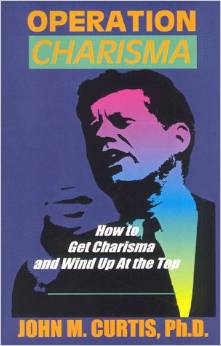LOS ANGELES.–Russia President Vladimir Putin, 72, appears closer to a ceasefire and peace deal now that the Russian military has driven remaining Ukrainian troops from the Russian Kursk region. Before that was done, Putin was reluctant to sign on to a ceasefire deal knowing that Ukrainian troops were parked inside Russian territory. Ukraine’s 47-year-old President Volodymyr Zelensky ordered the invasion of Kursk Aug. 6, 2024 with the intent to seizing Russian territory to have as a bargaining chip once the war ended. Zelensky thought he could make more progress on the eastern 1,000 km battlefront by diverting Russian forces to Kursk. When Putin didn’t bite and kept most his forces on the battlefront, Zelensky boasted about how easy it was to invade Russian territory. Putin took months to mount a counteroffensive in Kursk only recently clearing the area of Ukrainian troops.
President Donald Trump, 78, has been pushing Putin hard to sign on to a ceasefire deal to begin the long negotiating process to finally end the bloody war that’s killed thousands of Ukrainian and Russian troops, continuing to mount casualties by the day. Trump has pushed Zelensky equally hard on the formula for ending the war trading land-for-peace. Zelensky still complains that to the European Union that he’s getting the short end of the stick when it comes to losing sovereign territory. Zelensky’s EU backers like Germany think Russia must make more concessions for peace, essentially interfering with Trump’s peace process, working out the minimum acceptable conditions for the Kremlin. Three years of war has watched Zelensky loose some 25% of Ukraine’s best sovereign territory but, more importantly, continue the death and destruction in Ukraine.
Trump told Putin to “stop shooting” after a recent attack in Kiev killed 12 and injured scores more. But Trump’s envoy Steve Witkoff has spent hours with Putin discussing the details which must go into any ceasefire agreement. “I want him to stop shooting, sit down and sign a deal,” Trump said, when asked what he wanted from Putin. “We have the confines of a deal. I believe, and I want him to sign it,” realizing that getting Zelensky and his EU backers to sign on to the deal will be even more difficult. You’d think that the EU would want Zelensky to sign a peace deal at the earliest possible time, ending the worst fighting on the European Continent since WW II. Germany’s new Chancellor Friedrich Merz, 69, has been pushing for Putin to make more land concessions to Ukraine in any ceasefire and peace deal. Merz is out of the loop in ongoing ceasefire and peace talks.
Germany’s Defense Minister Boris Pistorius doesn’t like the ceasefire and peace deal emerging from the White House, thinking Ukraine makes most of the concessions. Kiev knew a ceasefire “may involve territorial concessions,” Pistorius told German broadcaster ARD. “But these will certainly not go . . . as far as they do in the latest proposal from the U.S. president,” Pistorius said, clearly taking Ukraine’s side that they’re getting the short end of the stick. But Pistorius doesn’t know the inside details of ceasefire and peace talks with Putin. Pistorius acts like Germany is prepared to keep the war going indefinitely if Zelensky doesn’t get the kind of concessions from Russia he’s looking for. French President Emmanuel Macron and U.K. Prime Minister Keir Starmer have also expressed frustrations with an amount of concessions Trump is willing to make to Putin.
Russian Foreign Minister Sergei Lavrov, Putin’s right hand man, told Secretary of State Marco Rubio that that there were enough “emerging prerequisites” to start negotiating a ceasefire and peace deal. No matter how optimistic, if the same opposition comes from the EU and U.K. it could throw and monkey wrench into ceasefire and peace talks. Putin knows at this point that the U.S. under Trump is on Russia’s side when it comes to restoring normal diplomatic relations. Putin can’t say the same thing when it comes to Brussels, where there’s considerable worry that Putin seeks to takeover more EU countries after Ukraine. Zelensky and former President Joe Biden accused Putin of having a master plan, starting in Ukraine and moving on to other EU countries. Putin has denied in the strongest possible terms that he wants to go to war with NATO, seeking to expand his territory.
Now that Russia has pushed Ukrainian forces out of Kursk, Putin looks more willing to sign on to ceasefire and peace deal but only as long as it meets certain conditions. Trump has said, much to objections from the EU that Crimea will stay in Russian hands for the foreseeable future. When it comes to Russian sovereignty over Crimea, Putin is willing to accept control, with the ultimate fate of Crimea decided through negotiations sometime in a distant future. Zelensky has moved to accept that any ceasefire or peace deal would involve trading land-for-peace, something he didn’t want to do. Resistance to trading land-for-peace still exists in Germany and the U.K. But Germany and the U.K. are out of the loop when it comes to current ceasefire and peace negotiations. Germany and the U.K. need to let Trump continue his work on a ceasefire and peace deal without interference.
About the Author
John M. Curtis writes politically neutral commentary analyzing spin in national and global news. He’s editor of OnlineColumnist.com and author of Dodging The Bullet and Operation Charisma.



